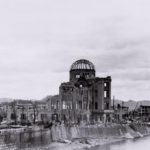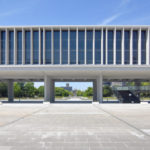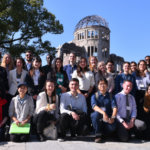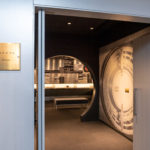Hiroshima’s path to reconstructionLearn about history – Hiroshima’s path to reconstruction

Hiroshima before the atomic bombing
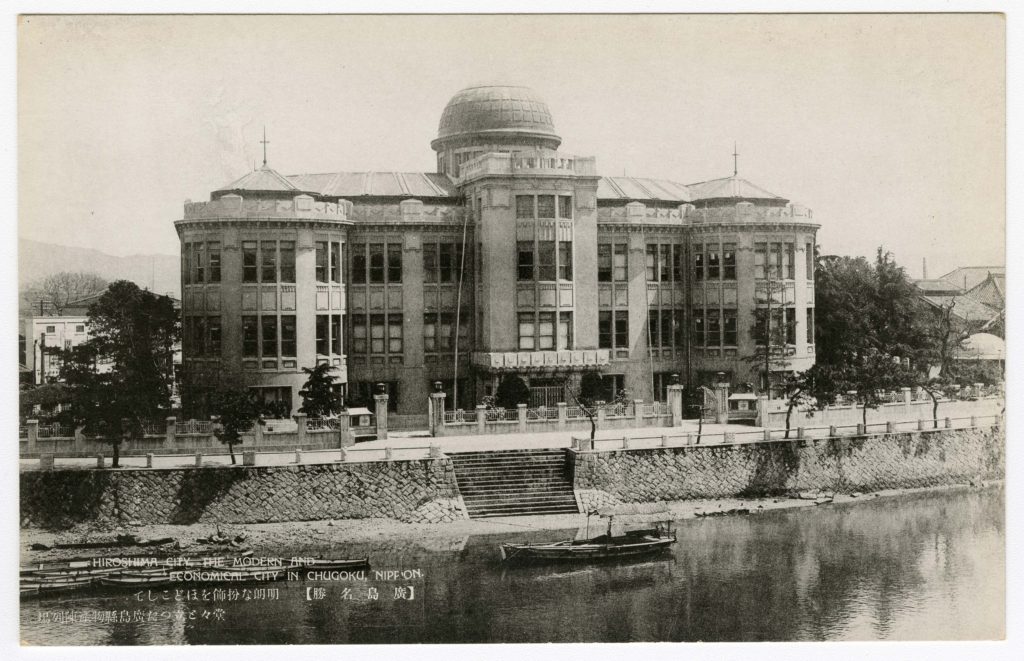
Collection and Courtesy of Hiroshima Municipal Archives
1589: Terumoto Mori Constructed Hiroshima Castle Located On The Delta Of The Ota River
The history of Hiroshima city begins. Hiroshima was among several large local castle towns in the Edo period after Nagoya, Kanazawa and other major towns. After the Meiji Restoration, the town of Hiroshima became home to the Hiroshima Prefectural Government and the Hiroshima Garrison Headquarters of the Imperial Japanese Army. This helped the city maintain its position as the regional center of politics and military.
1888: The Fifth Division Of The Imperial Japanese Army Was Established
The Fifth Division of the Imperial Japanese Army was established after the Hiroshima Garrison Headquarters
1889: Ujina Port Was Completed
In addition to opening the port, the railroad and road networks, which traversed the delta were built in the city of Hiroshima. The city became home to the large-scale factories of the heavy and chemical industries in the period between World War I and World War II. The heavy and chemical industries developed as Hiroshima’s major industries.
1902: The State-Run Hiroshima Higher Normal School Opened
The school is known as the top school in the field of education in the western Japan. Moreover, many national government offices and branch offices of nationwide business were established in the city. Hiroshima’s past as a center of administration, a military capital, and a center of learning led its transformation into a modern city.
The atomic bomb was dropped on Hiroshima
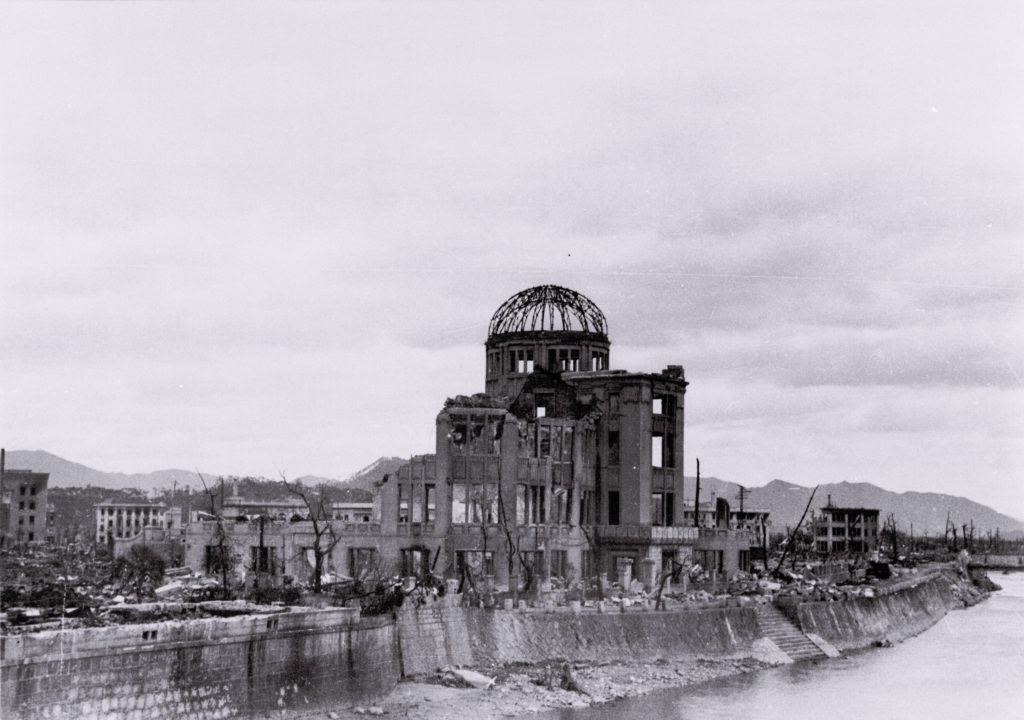
Photo by Toshio Kawamoto/ Courtesy of Yoshio Kawamoto
August 6, 1945- 8:15 a.m.
The first nuclear weapon used in human history, nicknamed “Little Boy” was dropped from the Enola Gay. After falling for approximately 43 seconds, it exploded mid-air in a nuclear eruption approximately 600 meters above the Shima Hospital, slightly southeast of the Aioi Bridge which was the target. In the moment it exploded and a gigantic fireball appeared, intense heat rays were emitted, causing the ground temperature of the surrounding area reach to temperatures between 3,000 to 4,000 degrees centigrade. Also the intensive bomb blast created maximum wind speeds of 440 meters per second at the hypocenter. The blast spread out rapidly, and swept the entire city in about 10 seconds.
Although the heat rays were only emitted for a short period of time, their extreme intensity caused anyone within a one-kilometer radius from the hypocenter either to die on the spot or to receive multiple severe burns. Even people over three kilometers away from the hypocenter were burned on the parts of their bodies that were not covered by clothing. Wooden structures located within two kilometers of the hypocenter were completely destroyed, and there were people left trapped under the remains.
Description of the damage from A-bombing to Hiroshima
|
The Dropping of the Atomic Bomb |
Bomb August 6,1945-8:15 a.m. |
|
Destruction wrought by the A-bomb |
●Characteristics―The mass destruction and killing was indiscriminate and instantaneous. For years to come, many would suffer from the effects of radiation. Their struggle continues to this day. ●Heat Ray―between 3,000 and 4,000℃ at ground level (Iron melts at 1,500℃) ●Blast―440 meters per second near the hypocenter.(A major typhoon may produce winds of 30〜40 meters per second.) ●Radiation ・Initial radiation (released in the first minute after detonation) ・Residual radiation (remained above ground for a period of time after the first minute),which indirectly led to the illness or death of many who entered the city after detonation. |
|
Death (by the end of December, 1945) |
Around 140,000±10,000 had died. |
|
Present condition of survivors (as of the end of March 2019)* |
Total population: 145,844 (Hiroshima City: 47,632) Average age: 82.65 |
Source: “Hiroshima Pocket Peace Guide” (as of February 1, 2015) (Produced by Peace Promotion Division, International Peace Promotion Department, Citizens Affairs Bureau, The City of Hiroshima)
* Source: Ministry of Health, Labor and Welfare, https://www.mhlw.go.jp/stf/seisakunitsuite/bunya/0000049130.html
You can also hear testimonies of a-bomb survivors. You can search it by age at the time of bombing or distance from the ground zero. * The registration is necessary.
Testimonies of a-bomb survivors
Hiroshima’s reconstruction
Reconstruction just after the atomic bombing
The atomic-bombing completely destroyed the city, including buildings as well as the public infrastructure, such as transportation and communication facilities and water and sewage systems. The reconstruction of Hiroshima City first began with development of urban infrastructure under the national government’s wad-damage reconstruction project as one of the 115 war-damaged cities in Japan.
August 8, 1945 (two days after the bombing): the Japanese National Railways Sanyo Line was reopened between Hiroshima and Yokogawa (a station next to Hiroshima Stations).
August 9, 1945 (three days after the bombing): Streetcar operations partially resumed in one section
August 10, 1945 (four days after the bombing): Water pumps resumed operations
However, water leaked and spouted at many places in the city; and repairing the waterworks was an arduous task. It is said that it took nine months to restore the water supply to the outskirts of the city.
As for the city’s reconstruction plan, 34 reconstruction plans proposed by citizens, government officials, and foreign people were published at the Hiroshima City Reconstruction Council and in newspapers. It was thought that reconstruction of the city from the ruins would be nearly impossible; but the reconstruction plan pursued the highest ideals attainable at the time, with ambitious plans for roads, including 100-meter wide roads, parks, green areas, and land readjustments to secure land for infrastructure. At that time, Hiroshima City was having financial difficulties with its budget. Citizens and those who were engaged in the reconstruction had to work hard and at times heavy burdens were imposed on citizens for the sake of reconstruction. At the same time, various forms of aid and support from overseas helped Hiroshima citizens to overcome the crisis that followed in the aftermath of the bombing.
The Hiroshima Peace Memorial City Construction Law
1949: The Hiroshima Peace Memorial City Construction Law was enacted
Initially, the reconstruction planning (Hiroshima Reconstruction City Planning) encountered many problems such as financial difficulties, lack of human resources and shortages in materials and public land. Due to the catastrophic damage from the bombing, tax revenue was minuscule in Hiroshima City. In order to cope with these conditions, Hiroshima mayor Shinzo Hamai, city council members, and other local people concerned made strenuous efforts to find a way and lobbied the national government and the Diet.
Enactment of this special law paved the way for special assistance from the national government, the transfer of national government properties and pushed reconstruction efforts forward. In addition, Hiroshima City was designated a “peace memorial city” under Article 1 of the law stating, “Hiroshima is to be a peace memorial city symbolizing the human ideal of the sincere pursuit of genuine and lasting peace.”
1952: “Hiroshima Reconstruction City Plan” was amended to the “Hiroshima Peace Memorial City Construction Plan”
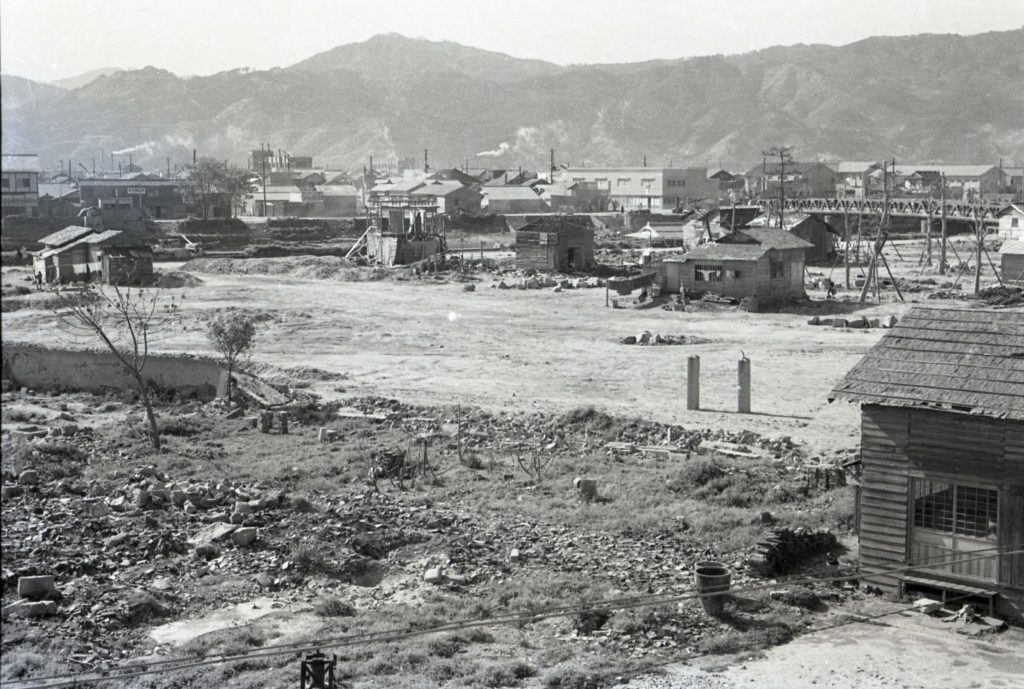
A special project for constructing “peace memorial facilities” was approved, and this made the construction the Peace Memorial Park, one of the special features of the reconstruction plan, possible.
1955: The display hall (Today’s main building of the Hiroshima Peace Memorial Museum)and the Peace Memorial Hall (today’s Peace Memorial Museum’s East Building) were completed
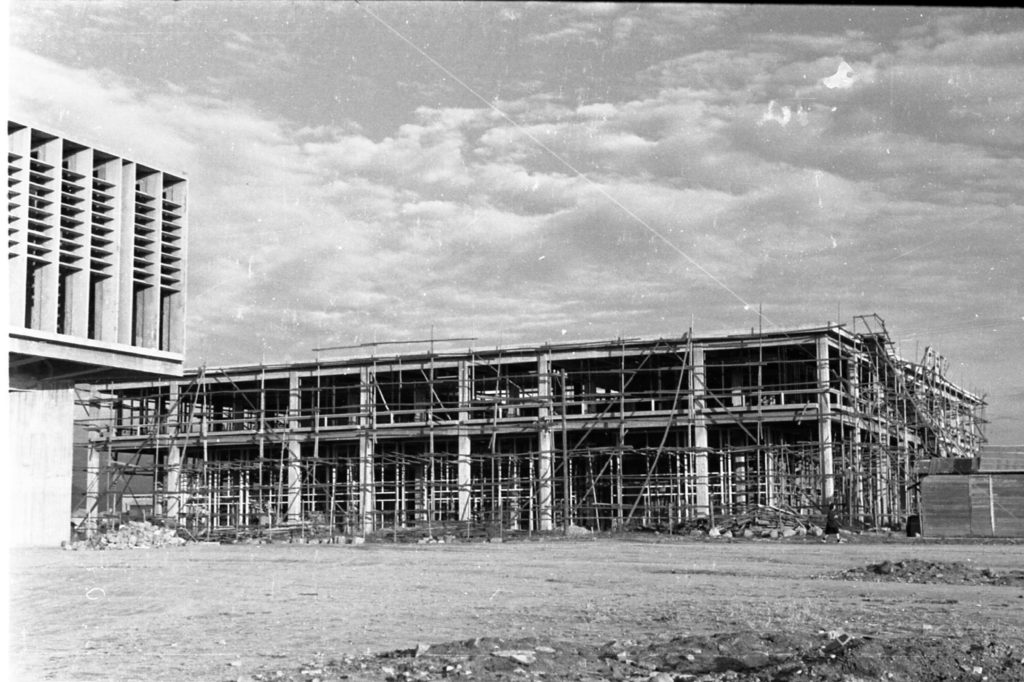
The construction took a long time because of the tight budged and the buildings were left unfinished for some time. Four years after the start of construction work, the buildings were completed.
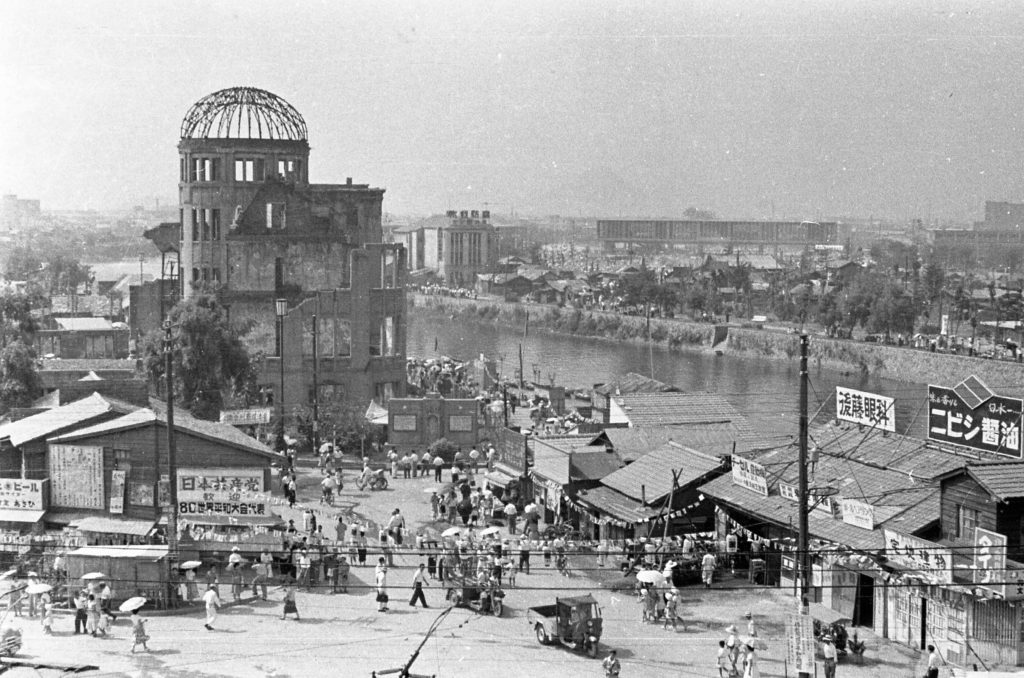
The reconstruction process in Japan typically started with a public authority that established the infrastructure. Once the land was prepared, what types of buildings would be constructed and how livelihoods would be rebuilt were typically left up to the private sector, such as land owners, building owners, and residents. The implementation of the Peace Memorial City Construction Plan faced criticism and dissatisfaction from the citizens from time to time, such as disapproval for the land readjustment policies. We also must not forget the burden and sacrifices made on the part of the citizens during reconstruction process.
Another Short History of the Reconstruction
Medical Care and Support for A-bomb Survivors
Learn more from the short booklet, “Hiroshima’s Path to Reconstruction“
Rebuilding of Industrial EconomyMedical Care and Support for A-bomb SurvivorsMedia and ReconstructionA City in Search of Peace
Hiroshima Prefecture and the city of Hiroshima undertook a two-year project, “Hiroshima Reconstruction and Peacebuilding Research Project”. The detail reconstruction process including the reconstruction of educational institutions and medical treatment was released.
Hiroshima Reconstruction and Peacebuilding Research Project
Reference; “Hiroshima’s Path to Reconstruction”, “Hiroshima for Global Peace” Plan joint Project Executive Committee (Hiroshima Prefecture and the City of Hiroshima), March 2020
Information related to this page
Tags associated with this article



